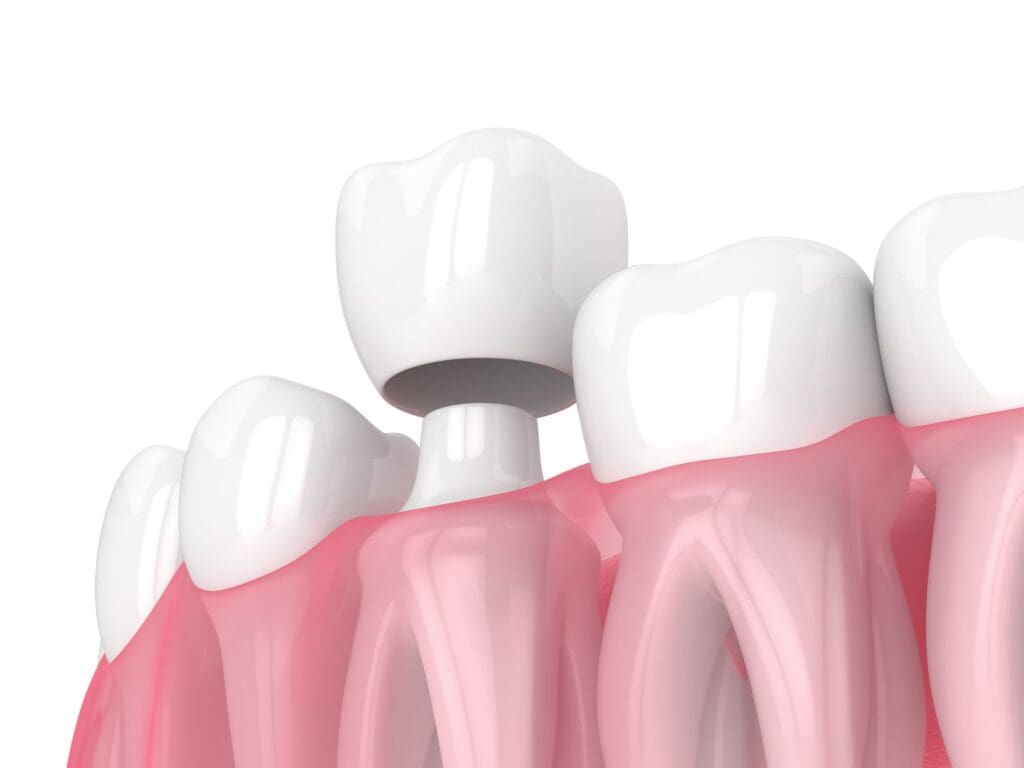Finding out you need a dental crown can feel overwhelming, especially if you’re not sure what to expect. Whether your tooth has damage from decay, injury, or wear over time, a crown can restore the tooth to full health. Knowing what to expect during your dental procedure can help calm your nerves and get you ready for your appointment.
Why You Might Need a Crown
Dental crowns act like protective helmets for damaged teeth. They’re recommended when a tooth has significant damage but doesn’t need to be completely removed. Common reasons include large cavities that can’t be fixed with a filling, cracked or broken teeth, or worn-down teeth. Crowns can also protect teeth after root canal treatment or cover dental implants.

The Crown Process: What to Expect
Your journey to a restored smile begins with a thorough exam. Your dentist will carefully check the damaged tooth and take X-rays to see the extent of damage below the gum line. This helps determine if a crown is truly the best solution or if other treatments might work better. It’s the perfect time to ask questions and discuss any concerns you might have.
Once you and your dentist decide a crown is right for you, the tooth preparation begins. Using local anesthesia to ensure your comfort, your dentist will reshape the tooth by removing a small amount of enamel. This creates space for the crown to fit naturally with your other teeth. While enamel doesn’t grow back, the crown will permanently replace what he removes.
Next comes the impression stage, where your dentist creates an exact model of your prepared tooth. Many offices now use digital scanners that create precise 3D images, while others use traditional putty-like materials. These impressions go to a dental lab where technicians craft your custom crown to match your natural tooth color and shape.
While you wait about two weeks for your permanent crown, you’ll wear a temporary one. This protects your prepared tooth but isn’t as strong as the final version. You’ll need to avoid sticky foods and chew carefully on the other side of your mouth.
The Final Steps
When your custom crown is ready, you’ll return for the final fitting. Your dentist will remove the temporary crown, check the fit and color of the new one, then permanently cement it in place. They’ll make sure your bite feels natural and comfortable before polishing the crown to a beautiful shine.
Caring for Your New Crown
With proper care, your crown can last 15 years or longer. Brush and floss around it just like your natural teeth, though you might want to use a softer toothbrush at first. Avoid chewing extremely hard foods like ice or hard candy, which could damage the crown. Seeing your dentist regularly helps your crown last longer and stops little issues from turning into major ones.
Beyond the Basics
Modern crowns blend seamlessly with your natural teeth. Porcelain and ceramic options can be color-matched to your existing teeth, while metal alloys offer exceptional strength for back teeth. Some offices even offer same-day crowns using advanced CAD/CAM technology.
While the process might seem lengthy, each step ensures your crown fits perfectly, functions properly, and looks natural. The temporary inconvenience leads to long-term benefits. Remember, getting a crown is about preserving your oral health as much as it’s about fixing a tooth.
If you’re feeling anxious about the procedure, talk to your dentist. Many offer sedation options to help you relax during treatment. The vast majority of patients find the process much easier than they anticipated. The results are well worth it when they can eat, speak, and smile without pain or self-consciousness.
Call (909) 277-6919 to schedule a dental exam at Claremont Dental Institute or request an appointment online.
